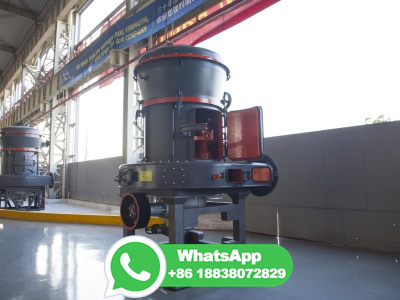
WEBDec 20, 2017 · Until the 1950s of the last century, the oxidized iron ores that were loaded into the blast furnace had granulometries within 10 and 120 mm. However, the depletion of highgrade iron ore sources has made necessary the utilization of concentration processes with the purpose of enriching the iron ore. Because of these processes, a fine .
WhatsApp: +86 18203695377
WEBIn the iron and steel industry, direct reduction is a set of processes for obtaining iron from iron ore, by reducing iron oxides without melting the metal. The resulting product is prereduced iron ore. Historically, direct reduction was used to obtain a burr in a low furnace. At the beginning of the 20th century, this process was abandoned in ...
WhatsApp: +86 18203695377
WEBOct 5, 2016 · Iron Ore Formation. Iron formation consists of iron ore such as siderite, magnetite, and hematite, with silica in the form of chert, jasper, etc., generally in bands, but sometimes not distinctly so. The bands of iron ore are at times highgrade, but are often mixed with a good deal of silica, the whole making an ore too lean for use without ...
WhatsApp: +86 18203695377
WEBJan 24, 2024 · A colleague suggested the duo try the process with red mud. It wasn't a sure thing, because the chemistry of red mud is much more complex than iron ore. But after melting 15 grams of the mud inside a furnace for about 10 minutes, the researchers found pearlsize spheres of nearly pure iron. "I was quite surprised," Souza Filho says.
WhatsApp: +86 18203695377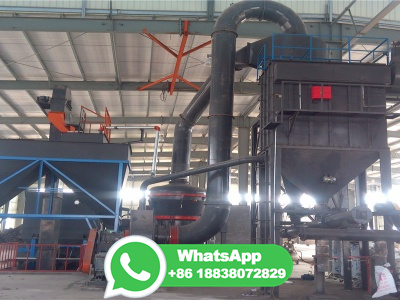
WEBAug 26, 2021 · The technology created two major developments in iron production. First, blast furnaces were now able to make cast iron for the production of hollowware such as pots and kettles. Second, in the new "indirect process" cast iron could be converted into wrought iron with a higher yield of iron from the ore than the direct process.
WhatsApp: +86 18203695377
WEBApr 23, 2024 · Blast furnaces produce pig iron from iron ore by the reducing action of carbon (supplied as coke) at a high temperature in the presence of a fluxing agent such as blast furnaces consist of several zones: a crucibleshaped hearth at the bottom of the furnace; an intermediate zone called a bosh between the hearth and .
WhatsApp: +86 18203695377
WEBMolten (melted) iron and carbon dioxide gas are products in the industrial iron making process which passes carbon monoxide gas through molten iron ore, Fe_2O_3, at 1500°C. Write a balanced chemical equation for the production of iron. Make sure to include the coefficient and physical states in parentheses for each reactant and product .
WhatsApp: +86 18203695377
WEBIron ore reduction is an important process in the iron/steelmaking industry, where iron ore is reduced to metallic iron, usually with coal, coke, natural gas, CO, or hydrogen as the reducing agents. Fig. 1. Scheme of the CBGIOR process ( Wei et al., 2017a,b ).
WhatsApp: +86 18203695377
WEBJun 28, 2013 · HIsarna process is a smelting reduction process for producing liquid iron directly from iron ore fines and coal. It represents a new, potentially more efficient way of making iron and is being developed for substantial reduction of carbon emissions from the ironmaking process. It is an initiative of ULCOS (ultra low carbon dioxide steelmaking ...
WhatsApp: +86 18203695377
WEBIron ore Iron ore is integral to the steelmaking process and one of the most sought after commodities in the world. Download our fact sheet. What is iron ore? Iron ores are rocks and minerals from which metallic iron can be extracted. There are four main types of iron ore deposit: massive hematite, which is the most commonly mined, magnetite ...
WhatsApp: +86 18203695377
WEBEarth's most important iron ore deposits are found in sedimentary rocks. They formed from chemical reactions that combined iron and oxygen in marine and fresh waters. The two most important minerals in these deposits are iron oxides: hematite (Fe 2 O 3) and magnetite (Fe 3 O 4 ). These iron ores have been mined to produce almost every iron .
WhatsApp: +86 18203695377
WEBApr 5, 2023 · The blast furnace and direct reduction processes have been the major iron production routes for various iron ores ( goethite, hematite, magnetite, maghemite, siderite, etc.) in the past few decades, but the challenges of maintaining the iron and steelmaking processes are enormous. The challenges, such as cumbersome production .
WhatsApp: +86 18203695377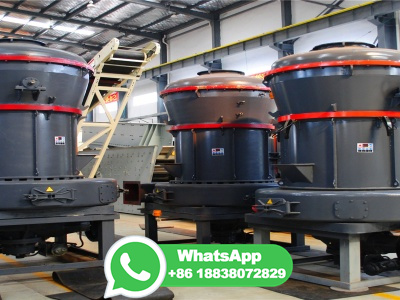
WEBAug 26, 2021 · Iron Making: Smelting. The blast furnace was where the smelting process was started. In 1646, the original blast furnace roared to life, lit with a 3000 degree fire that was kept burning 24 hours a day for months at a time. The blast furnace is where bog ore was smelted to create cast iron "pig" bars, so named because liquid cast iron was fed ...
WhatsApp: +86 18203695377
WEBIron ore pellets are marblesized balls of iron ore that are fused with clay for transportation and used in steel manufacture. The process of making pellets from iron ore is called pelletizing. The manufacture of steel from lowgrade iron ore involves processes like mining, crushing, separating, concentrating, mixing, pelletizing, and shipping.
WhatsApp: +86 18203695377
WEBIron is the most widely used metal on Earth. Iron is used to make steel . In turn, steel is used to make buildings, bridges, railroad tracks, vehicles of all kinds, and countless other products.
WhatsApp: +86 18203695377
WEBLesson Explainer: Extracting Iron. In this explainer, we will learn how to describe the extraction of iron from its ore in the blast furnace. Extraction of iron is arguably one of the most important industrial processes on Earth. Iron is used to make steel, which is incredibly important for constructing transport vehicles and large buildings.
WhatsApp: +86 18203695377
Midrex Process. Midrex is the most successful gasbased DR process; it is a continuous process. It is basically a countercurrent process where a hot and highly reducing gas (95vol.% of this gas mixture being hydrogen and carbon monoxide with a ratio of H 2:CO varying from to ) reduces lump iron ore or pellets to metallic iron as .
WhatsApp: +86 18203695377
WEBIt is a mixture of iron, oxygen and other elements, mixed in with sands and clays. Image, right: ore being mined from bell pits at Wilsontown. To make a useable metal, an ironworks has to get rid of the unwanted components of this mixture and keep as much of the iron as possible, producing a purer metal. The ironmaking process develops. Iron ...
WhatsApp: +86 18203695377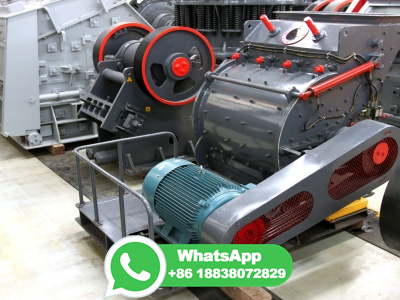
WEBJan 1, 2022 · As evident in Fig., the world's production of usable (processed) iron ore has increased from about 970 million tons in 2000 to billion tons in 2019. Australia is the largest iron ore producing country, producing approximately 919 million tons of usable ore in 2019, equivalent to about 37% of the world's iron ore production.
WhatsApp: +86 18203695377
WEBAug 13, 2017 · The process of smelting iron has been around for centuries, but in the early days of America furnaces were built in order to refine enough iron to build a country on. Getting the Ore. The business of Catoctin Furnace in Frederick County, Maryland, was producing iron and the furnaces and workers did that for more than 125 years. The .
WhatsApp: +86 18203695377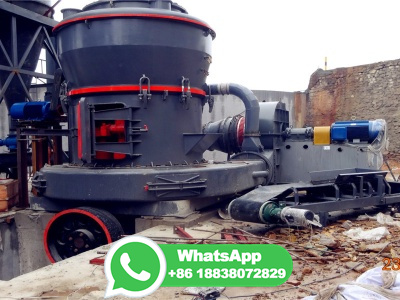
WEBNov 4, 2019 · All steel is made using raw iron. As previously mentioned, steel is characterized by the presence of iron and carbon. The ratio of these two elements varies depending on the specific type of steel being made. With that said, most types of steel contain about 1% carbon and 97% iron, with the remaining 2% consisting of trace .
WhatsApp: +86 18203695377
WEBDec 1, 2023 · Usually, Iron Ore is manufactured and converted into Pellets. These are oval lumps of iron ore that are hardened using fuel. This process of converting iron ore into pellets is known as Pelletization. Iron Ore Pellets are then used in the production of steel. Pellets are usually preferred instead of raw Iron Ore because it allows for maximum ...
WhatsApp: +86 18203695377
WEBIron metallurgy in Africa developed within Africa; though initially assumed to be of external origin, this assumption has been rendered untenable; archaeological evidence has increasingly supported an indigenous origin. Some recent studies date the inception of iron metallurgy in Africa between 3000 BCE and 2500 BCE. Archaeometallurgical scientific .
WhatsApp: +86 18203695377
WEBOct 9, 2023 · The Circored process uses pure H 2 to reduce iron ore with a particle size less than 1 mm, and the reduction rate of iron ore powder for 15 min at 650 °C can reach 70%. To improve the efficiency of the entire production process, 4 h H 2 reduction of iron ore powder from CFB is needed to achieve a metallization rate of 95%.
WhatsApp: +86 18203695377
WEBAug 23, 2022 · The blast furnace and direct reduction processes have been the major iron production routes for various iron ores ( goethite, hematite, magnetite, maghemite, siderite, etc.) in the past few ...
WhatsApp: +86 18203695377
WEBApr 5, 2022 · During the process of iron ore pelletization and preparation of feed for DRI or reduction smelting processes, around 3% of pellet fines (less than 8 mm) are generated as undesired product in the existing pellet plants. Such pellet fines acquire more than 24 million tonnes generated all over the world. Recycling and reuse of these high grade ...
WhatsApp: +86 18203695377
WEBApr 24, 2017 · Contaminants are removed from the melted pig iron, and the iron, once melted, is then cast. Casting is the process of pouring the iron into a mold thus giving it a shape. Molds and pouring methods divide this process up. Molds can be made as expendable molds (sand) or nonexpendable molds (metal). Pouring can happen via .
WhatsApp: +86 18203695377
WEBSep 18, 2023 · Iron ore pellets are made from both magnetite and hematite ores. Hematite ores are concentrated using a flotation process. Pellets include a mineral binder that represents about 2% by weight.
WhatsApp: +86 18203695377
WEBJun 30, 2023 · The production of iron from its ore involves an oxidationreduction reaction carried out in a blast furnace. Iron ore is usually a mixture of iron and vast quantities of impurities such as sand and clay referred to as gangue. The iron found in iron ores are found in the form of iron oxides. As a result of these impurities, iron must be first ...
WhatsApp: +86 18203695377